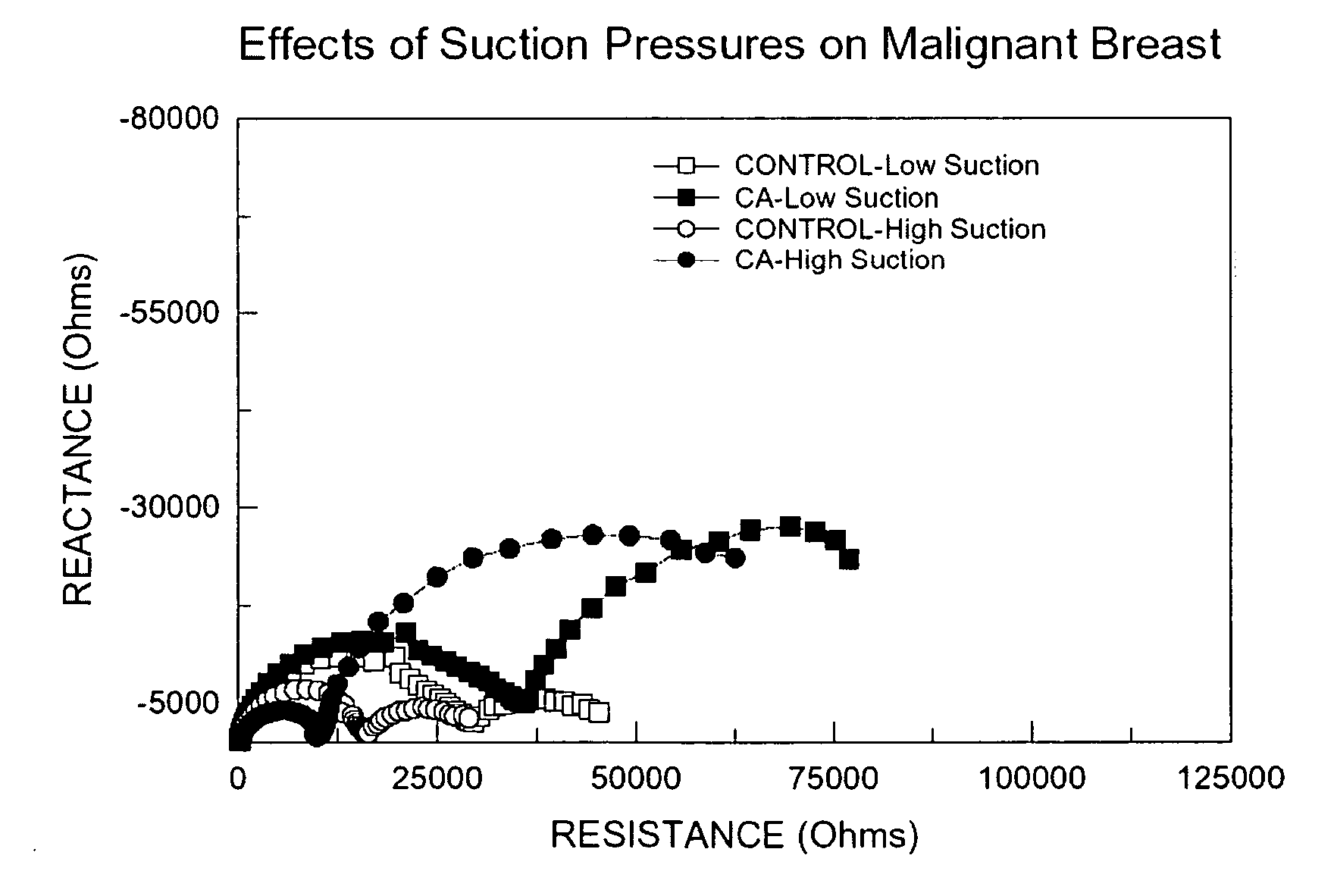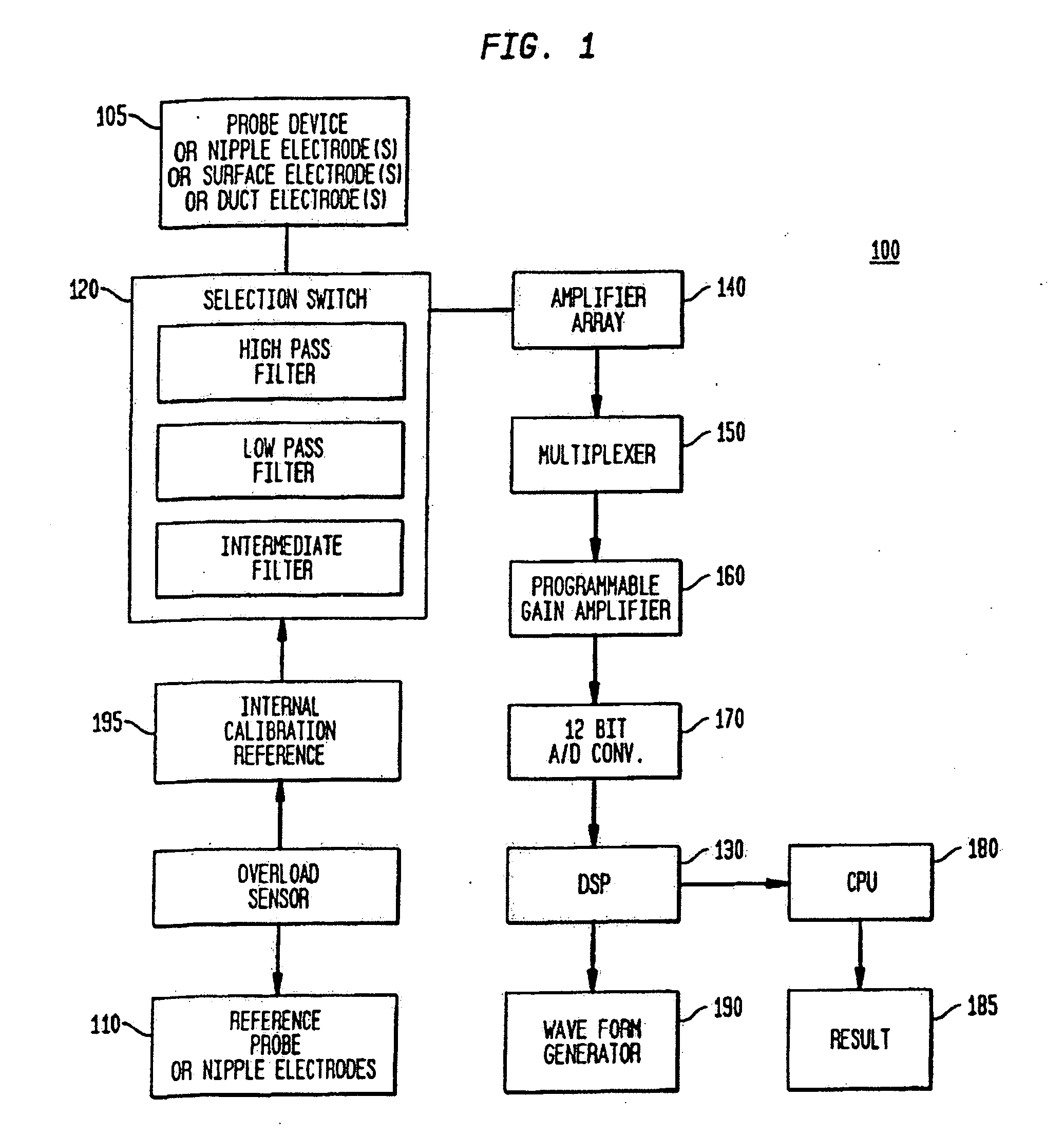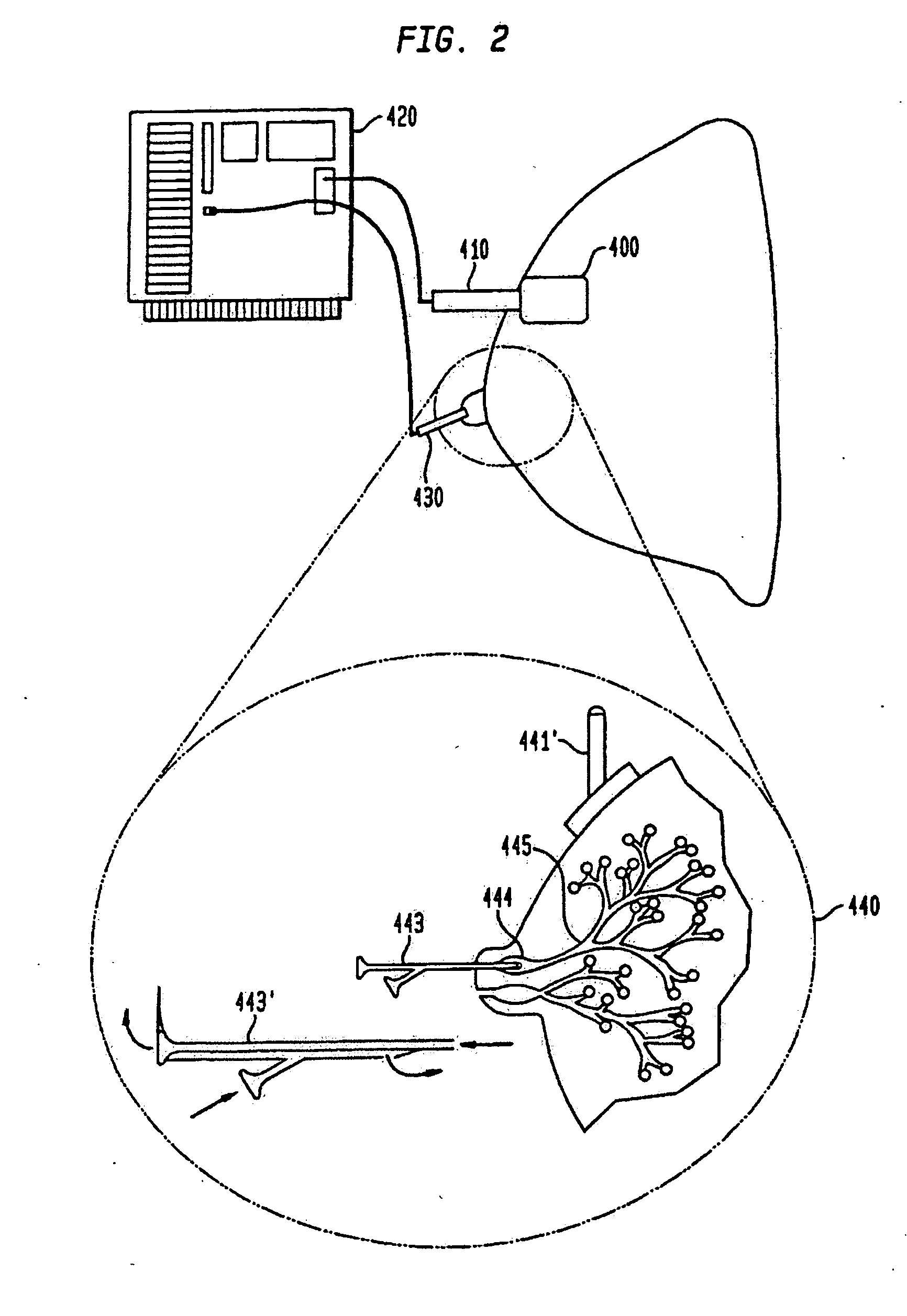Method and system for detecting electrophysiological changes in pre-cancerous and cancerous tissue and epithelium
- Summary
- Abstract
- Description
- Claims
- Application Information
AI Technical Summary
Benefits of technology
Problems solved by technology
Method used
Image
Examples
example 1
[0167] As mentioned above, impedance and DC electrical potential have been used separately at the skin's surface to diagnose breast cancer. Neither of these methods measures the ductal transepithelial DC or AC electrical properties of the breast. This significantly reduces the accuracy of the approach, because the origins of breast cancer are within the ductal epithelium, and not the surrounding breast stroma. Accuracy is further improved when the transepithelial measurements of impedance and DC potential are combined. The use of pharmacological and / or hormonal agents in combination with impedance or DC electrical potential measurements, provide a more effective method for detecting abnormal pre-cancerous or cancerous breast tissue.
[0168] Breast cancer develops within a background of disordered proliferation, which primarily affects the terminal ductal lobular units (TDLUs). The TDLUs are lined by epithelial cells, which maintain a TEP (transepithelial potential). In ...
example 2
Chemopreventative and Therapeutic Use
[0192] In addition to the ionic, pharmacologic, and hormonal agents described above, the system and method of the present invention may be used with cancer preventative and therapeutic agents and treatments. Specifically, electrical measurement of altered structure and function provides a method for evaluating a patient's response to the drugs without requiring a biopsy and without waiting for the cancer to further develop. Patients who respond to a given chemopreventative or therapeutic agent would likely show restoration of epithelial function to a more normal state. Patients who do not respond would show minimal change or may even demonstrate progression to a more advanced stage of the disease. This system and method, thus, may be used by either clinicians or drug companies in assessing drug response or by clinicians in monitoring the progress of a patient's disease and treatment, or monitoring the process of carcinogenesis (cancer developmen...
example 3
Electrophysiological Changes in Other Epithelia
[0193] The examples illustrated by FIGS. 12 and 13 were performed in human colon specimen removed at the time of surgery. Based on in vitro studies in breast epithelial tissues, similar changes in human ductal epithelium that can be measured in vivo are expected.
[0194]FIG. 12 demonstrates the short circuit current (Isc) of human colonic epithelium ex-vivo. The figure demonstrates the time course along the x-axis while varying the potassium gradient across the tissue. The potassium permeability of the apical membrane of human colonic mucosa (PKa) was determined in surgical specimens of controls and grossly normal-appearing mucosa obtained 10-30 cm proximal to colorectal adenocarcinomas. The mucosa was mounted in Ussing chambers and the basolateral membrane resistance and voltage were nullified by elevating the K+ in the serosal bathing solution. The apical sodium (Na+) conductance was blocked with 0.1 mM amiloride. This protocol reduce...
PUM
 Login to View More
Login to View More Abstract
Description
Claims
Application Information
 Login to View More
Login to View More - R&D
- Intellectual Property
- Life Sciences
- Materials
- Tech Scout
- Unparalleled Data Quality
- Higher Quality Content
- 60% Fewer Hallucinations
Browse by: Latest US Patents, China's latest patents, Technical Efficacy Thesaurus, Application Domain, Technology Topic, Popular Technical Reports.
© 2025 PatSnap. All rights reserved.Legal|Privacy policy|Modern Slavery Act Transparency Statement|Sitemap|About US| Contact US: help@patsnap.com



